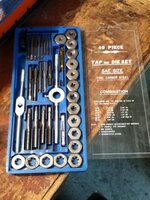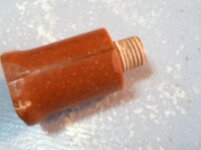Got all my taps and dies in the mail yesterday:biggrin:!! But I'm working way out of town until Sunday:mad-tongue:. I have a Snap-on (bluepoint) Tap and Die set, but it's all standard...everyone is using metric...going to have a lash with some standard sizes except the nib/section...buying those for now! Any legit reason fractional sizes won't work?

The main reason 'standard' sets won't work is they are too coarse for some of the threading.
For metric, 0.75mm pitch (distance from thread to thread) is commonly used; this works out to ±34 TPI (teeth per inch, the way standard threads are measured).
For the cap/body connection 1/2" (12.7mm) would be the closest match to the commonly used 12mm. 1/2" fine threads are 20 TPI or 42% coarser than what is commonly used. This isn't saying that won't work, but it may
cause issues.
AK


